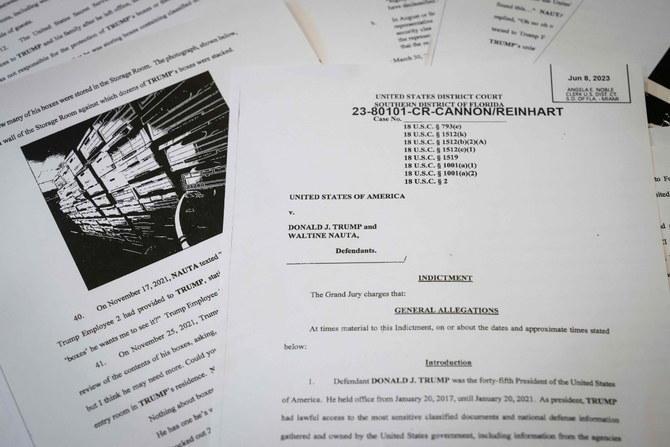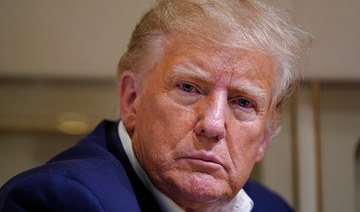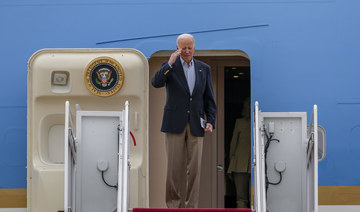MIAMI: Former President Donald Trump described a Pentagon “plan of attack” and shared a classified map related to a military operation, according to a sweeping 37-count felony indictment related to the mishandling of classified documents that was unsealed Friday and that could instantly reshape the 2024 presidential race.
The indictment paints an unmistakably damning portrait of Trump’s treatment of sensitive information, accusing him of willfully defying Justice Department demands to return documents he had taken from the White House to Mar-a-Lago, enlisting aides in his efforts to hide the records and even telling his lawyers that we wanted to defy a subpoena for the materials stored in his estate.
“I don’t want anybody looking through my boxes,” one of Trump’s lawyers described the former president saying, according to the indictment. He also asked if it would be better “if we just told them we don’t have anything here,” the indictment says.
Noting the “tens of thousands of members and guests” who visited the “active social club” of Mar-a-Lago between the end of Trump’s presidency in January 2021 through the August 2022 search, prosecutors argued that Trump had “nevertheless” stored the documents there, “including in a ballroom, a bathroom and shower, and office space, his bedroom, and a storage room.”
The indictment arrives at a time when Trump is continuing to dominate the Republican presidential primary and one day before a scheduled campaign trip to North Carolina. Though other candidates have largely attacked the Justice Department, rather than Trump, for the investigation, the indictment’s breadth of allegations and startling scope will be harder for Republicans to rail against than an earlier New York criminal case that many legal analysts had derided as weak.
The 49-page charging document, alleging that Trump not only intentionally possessed classified documents but also cavalierly and boastfully showed them off to visitors, is startling in scope and in the breadth of allegations. The indictment is built on Trump’s own words and actions as recounted to prosecutors by lawyers, close aides and other witnesses, with prosecutors even using against Trump his own words as a candidate and president professing to respect and know procedures related to the handling of classified information.
The indictment includes 37 counts — 31 of which pertain to the willful retention of national defense information, with the balance relating to alleged conspiracy, obstruction and false statements — that taken together could result in a yearslong prison sentence.
Trump is due to make his first court appearance Tuesday in federal court in Miami, where the case was filed. He was charged alongside Walt Nauta, an aide and close adviser to Trump who prosecutors say brought boxes from a storage room to Trump’s residence for him to review and later lied to investigators about the movement. A photograph included in the indictment shows several dozen file boxes stacked in a storage area.
The case adds to deepening legal jeopardy for Trump, who has already been indicted in New York and faces additional investigations in Washington and Atlanta that also could lead to criminal charges. But among the various investigations he has faced, legal experts — as well as Trump’s own aides — had long seen the Mar-a-Lago probe as the most perilous threat and the one most ripe for prosecution. Campaign aides had been bracing for the fallout since Trump’s attorneys were notified that he was the target of the investigation, assuming it was not a matter of if charges would be brought, but when.
Enumerating the defense and foreign intelligence-related information included in the documents, prosecutors wrote that their “unauthorized disclosure ... could put at risk the national security of the United States, foreign relations, the safety of the United States military, and human sources and the continued viability of sensitive intelligence collection methods.”

















